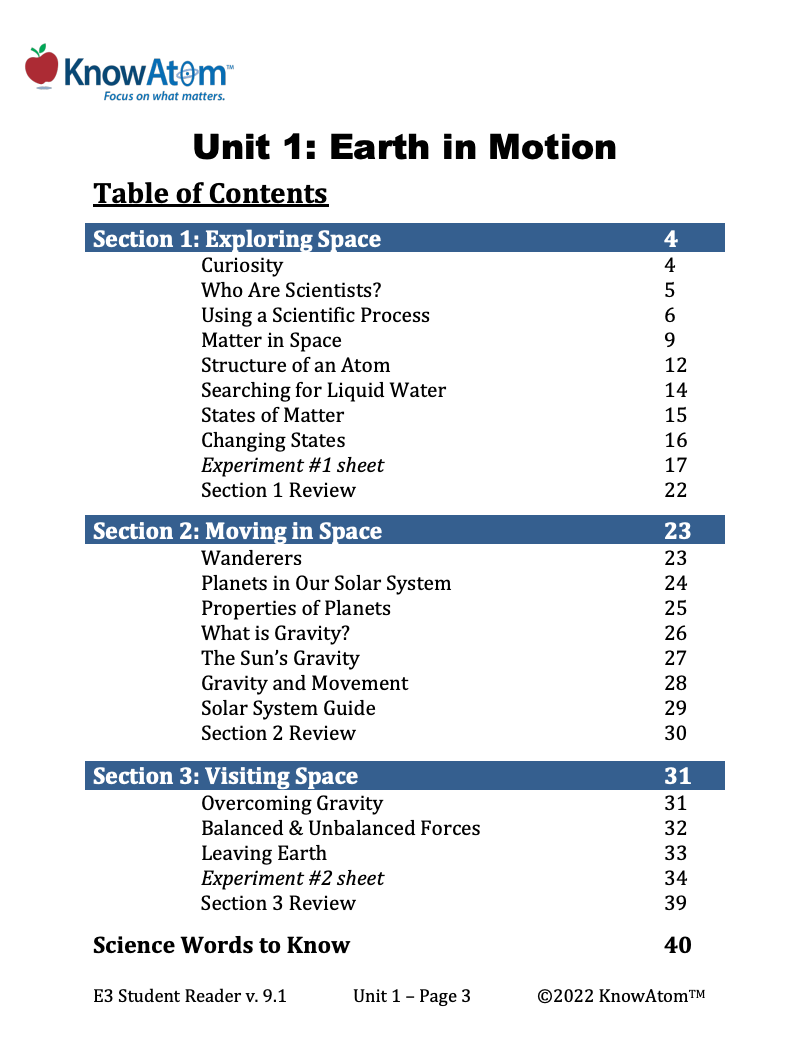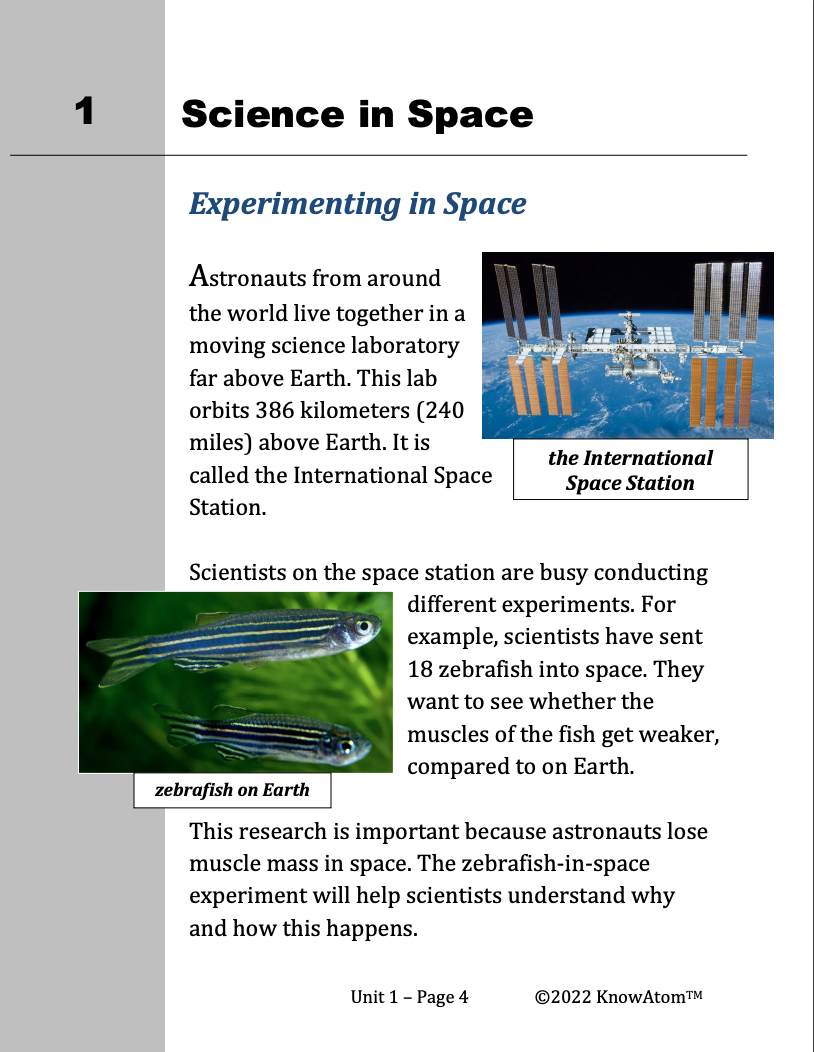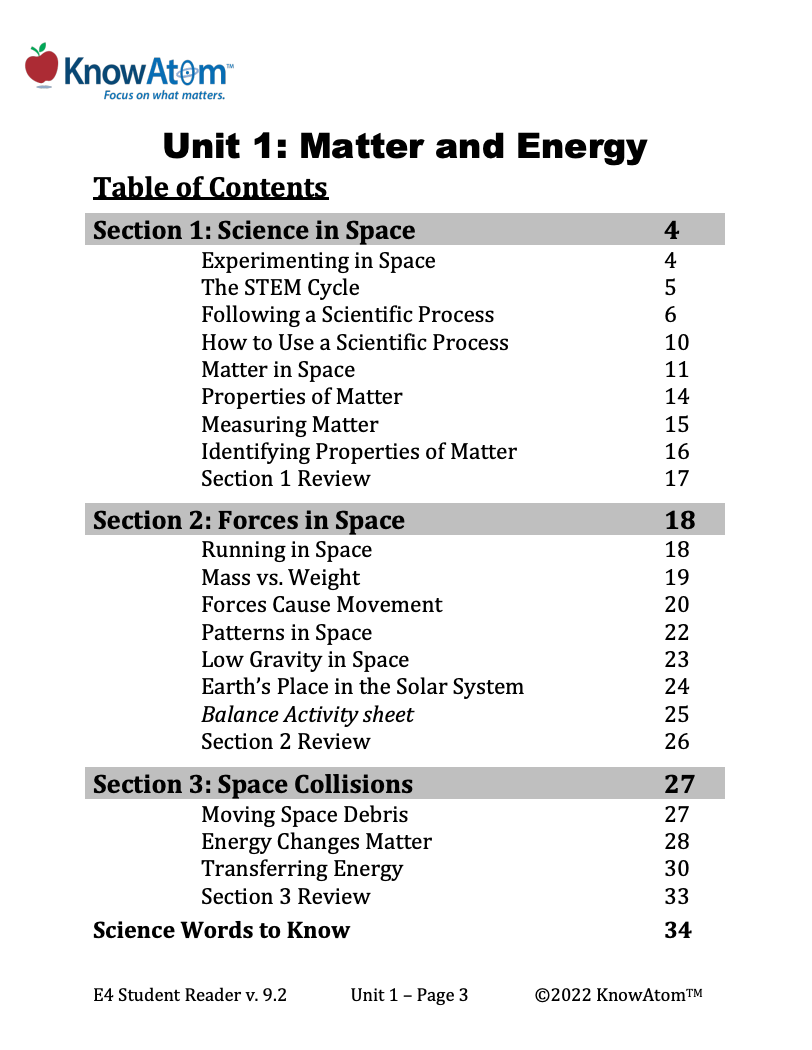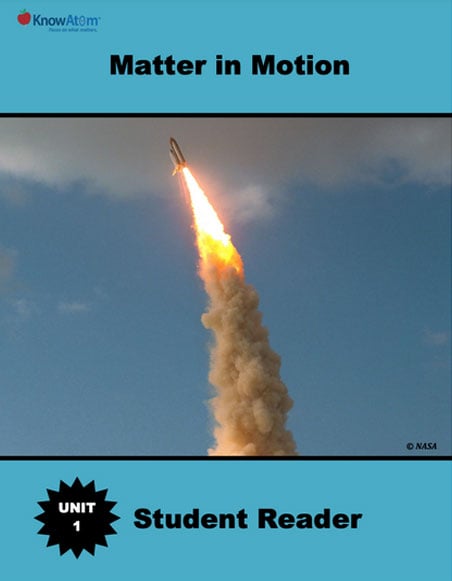Represent data in graphical displays to reveal patterns of daily changes in length and direction of shadows, day and night, and the seasonal appearance of some stars in the night sky. *In this unit, students are introduced to the concept of patterns caused by the relative motions of the sun, moon, and Earth.

In this lesson, students model the solar system and analyze Earth’s place in the system as well as how the force of gravity causes the planets to move around the sun in predictable, regular paths. This page serves to highlight the key components of this lesson.

In this unit, students analyze the phenomena of matter, forces, and energy. In this lesson, they compare the effects of unbalanced versus balanced forces on objects. They then evaluate how matter interacts with and is changed by energy, which transfers from one object or system to another. This page showcases key components of this lesson.

In this unit, students explore matter, forces, and energy. In this lesson, students evaluate the science phenomena of how matter interacts with and is changed by energy, which transfers from one object or system to another. This page is a high-level extract of the components of this lesson.

In this unit, students discuss how all matter in the universe is made up of different combinations of atoms formed from chemical reactions. They use scale models to compare properties of the sun, moon, and Earth, and then use that knowledge to analyze the science phenomena of how patterns are formed by the relative positions and movements of the sun, moon, and Earth. This page highlights key components of this lesson on patterns.
Standards citation: NGSS Lead States. 2013. Next Generation Science Standards: For States, By States. Washington, DC: The National Academies Press. Neither WestEd nor the lead states and partners that developed the Next Generation Science Standards were involved in the production of this product, and do not endorse it.
